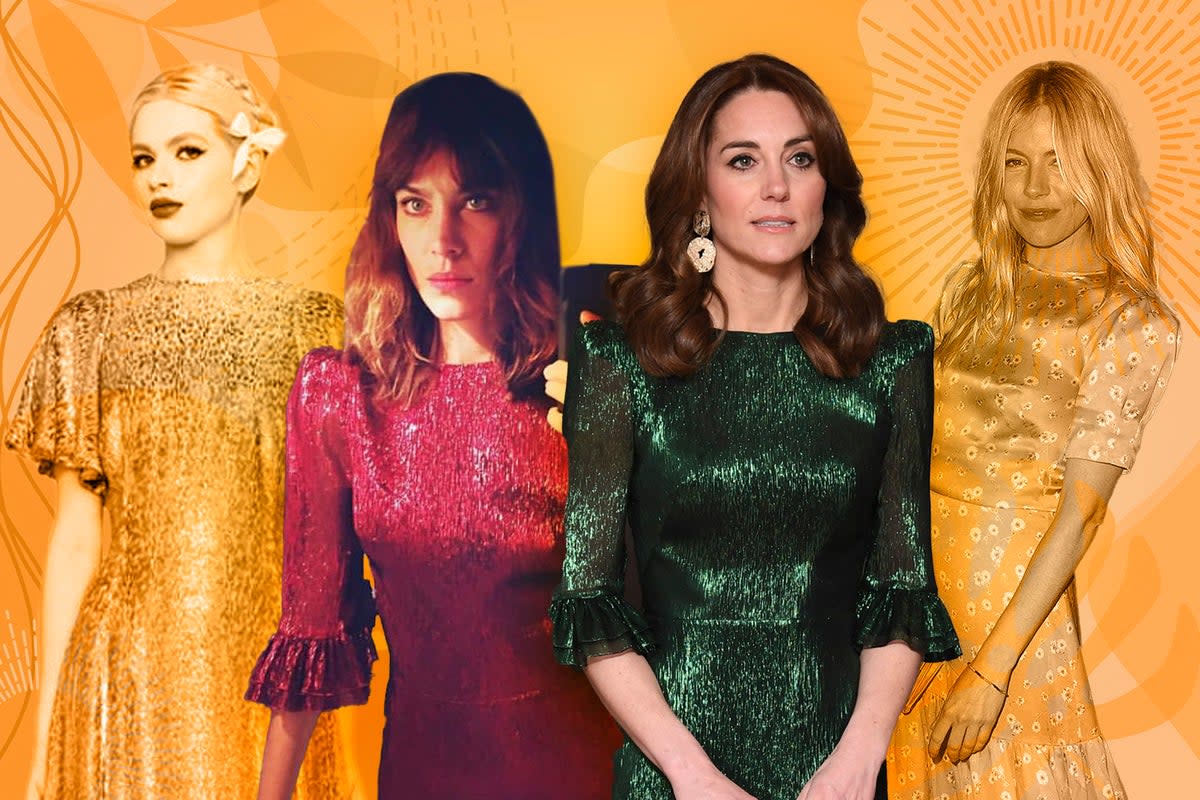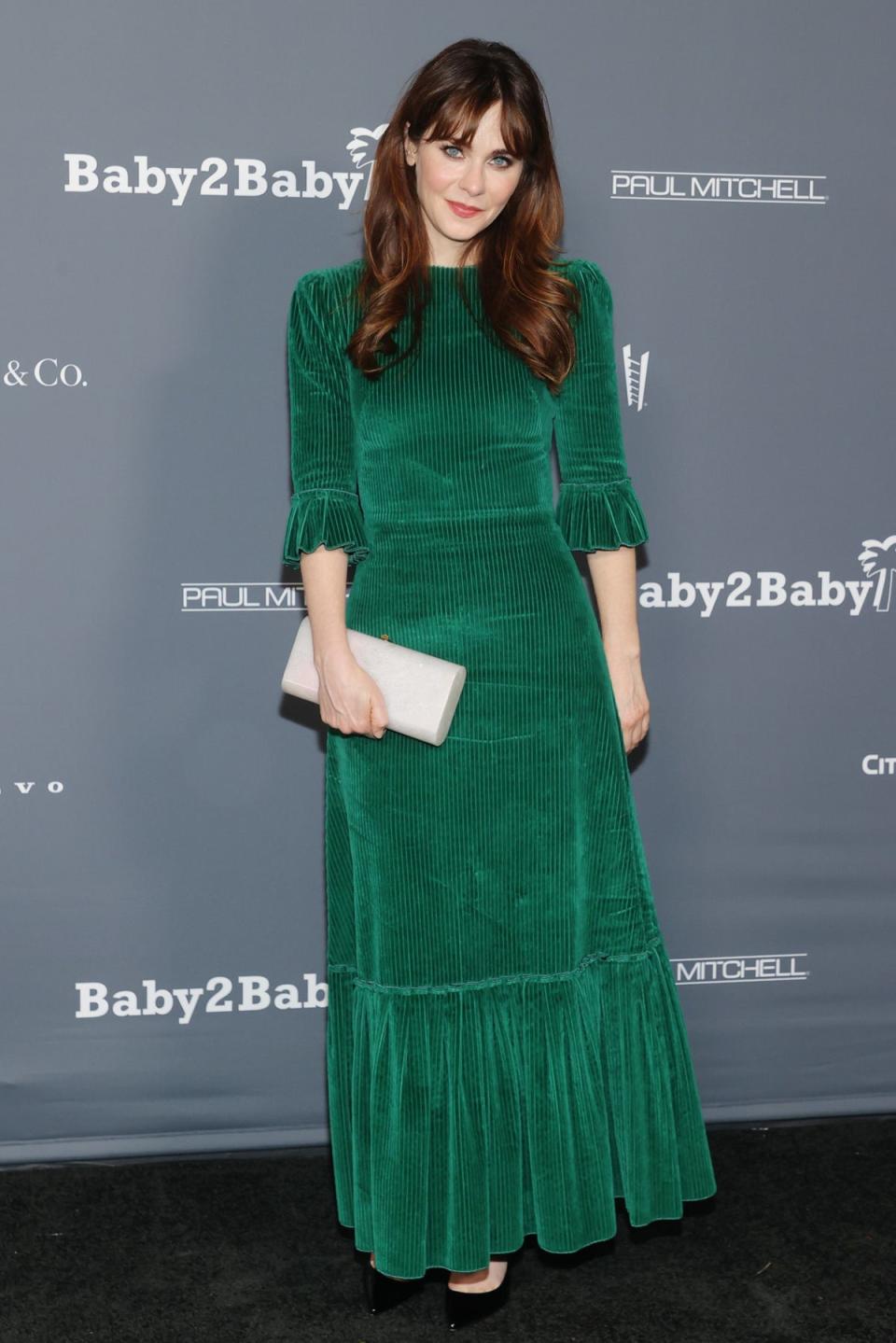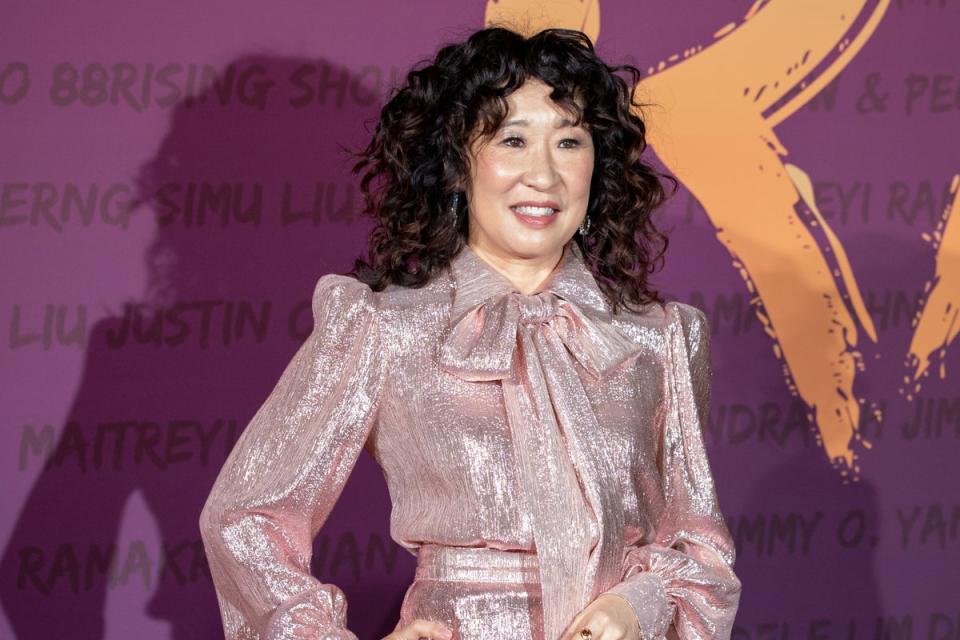Everyone from Kate Middleton to Kylie wore The Vampire’s Wife – so why is it closing down?

Picture the perfect dress. It’s fitted and flattering. There are frills and flourishes in all the right places. And it manages to be somehow sophisticated, girlish, and subversive all at the same time – like anyone wearing it is keeping a secret. Few brands make dresses like that today, but The Vampire’s Wife was one of them. Ever since It girl-turned-entrepreneur Susie Cave co-founded the label with Alex Adamson in 2014, it has been a cult classic among the style set. Worn everywhere from festival stages to royal weddings, the brand boasted the glitziest of fanbases, spanning from Kate Moss to the Princess of Wales, who wore its green Falconetti dress for an official royal portrait in 2022. Two years previously, Vogue named that gown the “dress of the decade”.
Imagine the surprise, then, when Cave announced earlier this week that The Vampire’s Wife would be shutting down. I received the news via email on Tuesday: “Despite a period of positive growth and sales, the upheaval in the wholesale market has had dramatic implications for the brand,” read a statement. “The Vampire’s Wife would like to express their heartfelt thanks to all clients, partners and those who have worn the brand these last 10 years. Your support has been invaluable, and we are deeply grateful.”
Cave followed up with her own farewell statement on Instagram, writing: “I say this with great sadness and want to express my undying gratitude to you all for your support. I wish to thank my extended family at The Vampire’s Wife who helped me create such beautiful things. I cannot describe how much you have all meant to me. I love you all, Susie x.”
Cue an entire fanbase left feeling bereft, confused, and saddened. “You’re amazing,” wrote Claudia Winkleman, in the comments under Cave’s post. “Never have dresses felt more feminine and dreamy,” chimed supermodel Karen Elson. “Thank you for the beauty and sexiness you have brought to our lives through your incredible clothes,” added Bella Freud. Even Patricia Arquette joined in, writing: “You have made stunning clothes. May this next chapter of your life be gentle and joyful.”
It’s hard to describe the hold one brand can have on an entire industry, particularly when today’s market is increasingly saturated with small-scale labels that largely operate via social media. Maybe the success of The Vampire’s Wife was partly down to the clientele, which, in addition to royalty, included Sienna Miller, Greta Gerwig, Florence Welch, Olivia Wilde, and Kylie Minogue. Perhaps it was thanks to Cave’s own reverential status as muse and wife to musician Nick Cave; together, the genetically and artistically blessed couple are, and always have been, as effortlessly cool as their output.
But it might’ve simply been down to the dresses. Distinctive, well constructed, and with a litany of idiosyncrasies (puffed shoulders, frilled sleeves, tightly fitted), they were instantly recognisable to those in the know. More importantly, though, The Vampire’s Wife was one of those brands that meant something to people. Many wore Cave’s designs on their wedding day, including actor Samantha Morton and beauty journalist Sali Hughes.
Many brands like The Vampire’s Wife also struggled through Covid and were then hit by the rising trading costs brought on by Brexit. I think there will be a tough few years to come
Michelle Barrett, celebrity stylist
“I’d never imagined myself in a traditional white wedding dress and wanted something that felt less structured, more feminine and made me feel like an elevated version of myself, rather than another person entirely,” recalls Claire Cohen, who wore a silver Falconetti for her wedding. “That’s what Susie Cave did so well: she understood how to dress women so they felt as good as they looked. I know this should be the case on your wedding day, but I’ve never had so many compliments on something I’ve worn and the silver material almost glowed in the candlelight of our ceremony.” A week after Cohen’s wedding, Alexa Chung was seen wearing the same dress: “That only made me feel that other women felt the same magic.”
Like her husband, Cave speaks about creativity with visceral urgency: “My imagination is based in folk art, fairy tales, mystical things,” she told The Guardian. “It gets a little bit scary in there [...] This is something I have dealt with all of my life, a sense of impending catastrophe, a dark force on the boundary of my vision. I try to use this darkness to create beautiful and soulful things.”
Running the brand was also an emotional outlet for Cave, whose son, Arthur, died at the age of 15 in 2015. “I get lost when I’m designing,” she told the Daily Mail in 2018. “Time just flies by. It’s actually an absolute gift, because the worst thing happened to me. I channel any positive energy I can into creating clothes.”

All of these things are part of what made The Vampire’s Wife so special. You weren’t just buying into a brand, you were buying into something meaningful. I’ve been lucky enough to wear Cave’s designs on several occasions, including holidays and weddings. The most memorable time, though, was when I wore one of the brand’s fuchsia floor-length gowns in the most unlikely of settings: the funeral of a close friend. Her passing was sudden, and all of us chose to wear pink to celebrate her life. Vibrant, joyful, and covered in ruffles and swirls, that dress was the most fitting outfit I could think of; it made me smile.
Cave has not yet elaborated on the reasons for closing her brand. But the closure speaks to a much wider problem in the industry. Designer Mara Hoffman, for instance, also revealed this week that she will be closing her namesake label, and after 24 years. Writing on Instagram, the CFDA award winner for sustainability announced that her summer 2024 collection would be her “last offering for the time being”. Speaking to Vogue, Hoffman, whose work was propelled to fame by support from legendary Sex and the City stylist Patricia Field, explained that her business model was no longer sustainable.
“There are not many companies that have successfully done this for as long of a period as we have,” she said. “And the reality is that the demands that are on a small company financially make it almost impossible to be privately held and run after a certain point.”
“I am left wondering what a brand has to do these days to survive,” says Amy Roberton, denim consultant and creative director at sustainable brand Seventy + Mochi. “As a creative director and brand manager, I know how hard it is to get that perfect blend of quality, innovation and desirability balanced with the correct price point – and most importantly, these days, to deliver all that in a product that is not destroying our planet or harming the people who make it. The reality is then on top of that we all have to make money down the chain in order to survive.”
It doesn’t help that there have been major closures elsewhere, too. Only two months after purchasing online luxury retailer Matches for £52m, Frasers Group announced it would be shutting the company down. Meanwhile, after 130 years operating as London’s flagship department store, Fenwick closed its doors.
“The struggles of British department stores is widely known, but unfortunately these have often been a traditional sales channel for boutique brands,” says Rachael Wood, managing director of luxury cashmere brand, Chinti & Parker. “With the closures and struggles of these wholesales, smaller brands are suddenly left with fewer places to sell their products, and increased competition for those that are still operating.”
In many ways, it’s hard to know where the issue starts and ends. “It’s almost a catch-22 in that designers work so hard to be independent, but they rely heavily on bigger brands such as Matchesfashion and Net-a-Porter,” adds Wood. “Also, while marketplaces offer more control for a brand, there is a great cost to the profit margin.”

There is also the ongoing issue of fast fashion, offering shoppers who either can’t afford or don’t care to be environmentally conscious the opportunity to tap into trends for lower price points. “If boutique brands can’t achieve similar economies of scale, it becomes much harder for them to compete,” adds Wood.
“It’s tough out there,” says Susie Nelson, fashion expert and owner of vintage emporium Modes & More. “Costs are all increasing. Many brands have excess stock that they need to sell in order to release funds for production and design. Investors are cautious about funding in the current market. And a lot of customers have decided to rent rather than purchase expensive items for black tie or special events. Plus, the younger generation are anti-buying new products and are looking at vintage or other sustainable alternatives."
For The Vampire’s Wife in particular, one difficulty might’ve been the pandemic – given no one was going anywhere for a while, let alone somewhere you’d wear a designer gown – but another was the price; the aforementioned Falconetti cost around £1,500. “Most people are cutting back on purchases, particularly for special occasions and reusing what they already have,” says celebrity stylist Michelle Barrett. “Many brands like The Vampire’s Wife also struggled through Covid and were then hit by the rising trading costs brought on by Brexit. I think there will be a tough few years to come. British fashion as a whole will survive, but we will likely see more brands fall before this time of austerity is over.”
It’s hard to know what the future of British fashion looks like right now. Few brands carried the sentimental, social, and sartorial value of The Vampire’s Wife. “The Vampire’s Wife had a unique aesthetic that resonated with a lot of people,” adds Wood. “It’s a stark reminder of how the fashion industry is constantly evolving. The closure raises questions about how more needs to be done to support these businesses and ensure a diverse and thriving fashion industry.”


